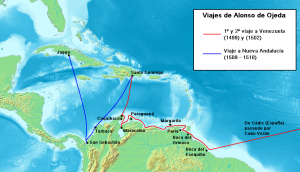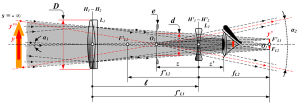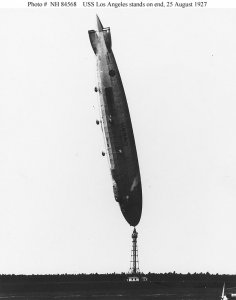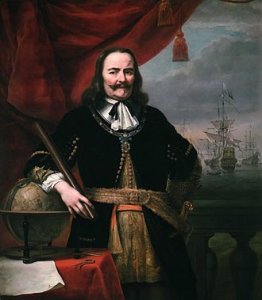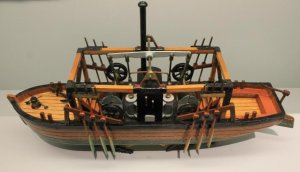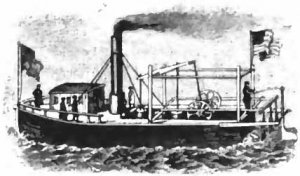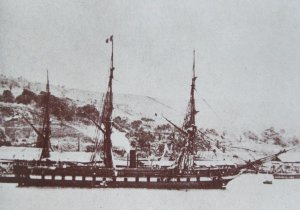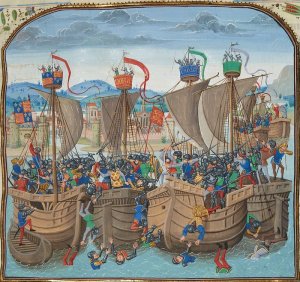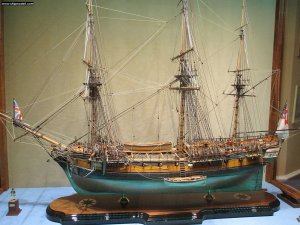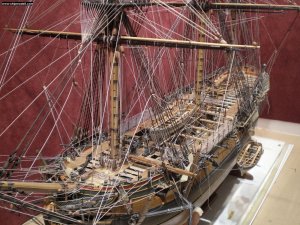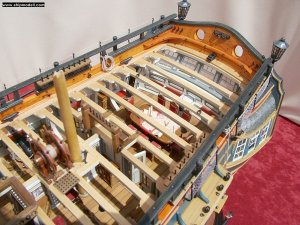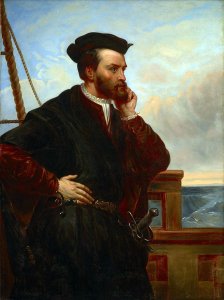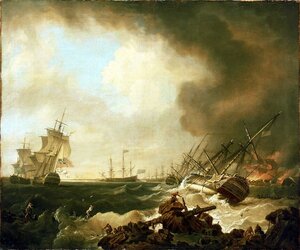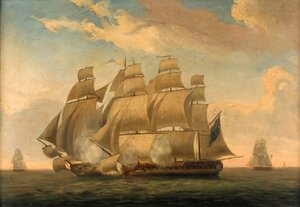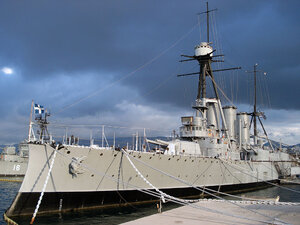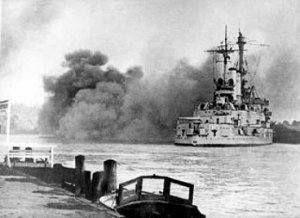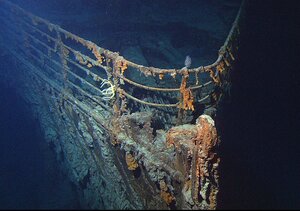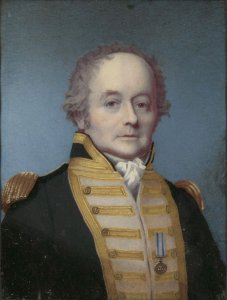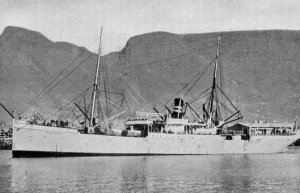Today in Naval History - Naval / Maritime Events in History
20th of August
please use the following link and you will find the details and all events of this day ..... in the following you will find some of the events
1777 - Launch of Barfleur-class 90 gun Ship of Line HMS Formidable
HMS Formidable was a 90-gun second rate ship of the line of the Royal Navy, designed by Sir Thomas Slade on the lines of the 100-gun ship Royal William, launched on 20 August 1777 at Chatham. In about 1780, she had another eight guns added to her quarterdeck increased to 98-guns.

Scale model of HMS Formidable, flagship of Rodney at the Battle of the Saintes. On display at Fort Napoléon des Saintes museum.
1778 - Launch of french 74 gun Ship of the Line Neptune

Saint Remi museum of Reims (Marne, France) ; miltary room, model of the Neptune
1785 – Launch of Yacht HDMS Kronprindsens Lystfregat
HDMS Kronprindsens Lystfregat (literally, "the crown prince's pleasure frigate") was a yacht launched in Britain in 1785. George III gave it to his nephew Frederick, the Crown Prince of Denmark. Kronprindsens Lystfregat cost £10,347 to build and furnish.

Scale: 1:48. Plan showing the body plan, sheer lines with stern quarter and broadside window decoration, and longitudinal half-breadth for building a yacht for the Prince Royal of Denmark at Deptford Dockyard.
1797 - Launch of french Carrère class 40 gun frigate Carrère at Venice
40-gun design by Pierre-Alexandre Forfait, with 28 x 18-pounder and 12 x 8-pdr guns, plus 4 x 36-pounder obusiers.
Carrère was a French frigate that served briefly in the French navy before the British captured her in 1801, naming her HMS Carrere. She seems never to have seen any meaningful active duty after her capture as she was laid up in 1802 and finally sold in 1814.

1800 - Start of a 6 day engagement in which HMS Seine (48) captured Vengeance (24) off the Mona Passage.
HMS Seine was at West Africa before she sailed for Jamaica in July. On 20 August 1800 Seine attacked the French ship, Vengeance, which had just finished refitting at Curaçao. The vessels broke off action and Seine was unable to resume the engagement until 25 August. Then, after an hour and a half of hard fighting, Seine captured the French frigate. Both ships had sustained heavy casualties; 13 crew were killed aboard the Seine, 29 were wounded, and the ship was cut up. However, Vengeance sustained worse; almost cut to pieces, many considered her beyond repair. Nevertheless Vengeance was repaired in Jamaica and taken into British service under her existing name. In 1847 the Admiralty authorized the issue of the Naval General Service Medal with clasp "Seine 20 Augt. 1800" to all surviving claimants from this action.

Depiction of the capture of Vengeance
1808 - Launch of French Pallas-class fifth rate frigate La Renommée, later HMS Java
HMS Java was a British Royal Navy 38-gun fifth-rate frigate. She was originally launched in 1805 as Renommée, described as a 40-gun Pallas-class French Navy frigate designed by Jacques-Noël Sané, but the vessel actually carried 46 guns. The British captured her in 1811 in a noteworthy action during the Battle of Tamatave, but she is most famous for her defeat on 29 December 1812 in a three-hour single-ship action against USS Constitution. Java had a crew of about 277 but during her engagement with Constitution her complement was 475.

Capture of the HMS Java Drawn & Etched by N. Pocock, from a Sketch by Lieut. Buchanan / Engraved by R. & D. Havell / Published by Messrs. Boydell & Co.
1810 - The Battle of Grand Port started,
which was a naval battle between squadrons of frigates from the French Navy and the British Royal Navy. The battle was fought during 20–27 August 1810 over possession of the harbour of Grand Port on Isle de France (now Mauritius) during the Napoleonic Wars. The British squadron of four frigates sought to blockade the port to prevent its use by the French through the capture of the fortified Île de la Passe at its entrance. This position was seized by a British landing party on 13 August, and when a French squadron under Captain Guy-Victor Duperré approached the bay nine days later the British commander, Captain Samuel Pym, decided to lure them into coastal waters where his superior numbers could be brought to bear against the French ships.

Detail from Combat de Grand Port by Pierre-Julien Gilbert. Visible from left to right: HMS Iphigenia (seen striking her colours), HMS Magicienne and HMS Sirius being set on fire by their crews, HMS Nereide surrendering, French frigate Bellone, French frigate Minerve, Victor (in the background) and Ceylon. Many of the details shown in the painting did not happen simultaneously, but were spread over several days
1810 – 38 gun frigate HMS Lively (1804) wrecked
HMS Lively was a 38-gun fifth rate frigate of the Royal Navy, launched on 23 July 1804 at Woolwich Dockyard, and commissioned later that month. She was the prototype of the Lively class of 18-pounder frigates, designed by the Surveyor of the Navy, Sir William Rule. It was probably the most successful British frigate design of the Napoleonic Wars, to which fifteen more sister ships would be ordered between 1803 and 1812.

1852 – Steamboat Atlantic sank on Lake Erie after a collision, with the loss of at least 150 lives.
Atlantic was a steamboat that sank on Lake Erie after a collision with the steamer Ogdensburg on 20 August 1852, with the loss of at least 150 but perhaps as many as 300 lives. The loss of life made this disaster, in terms of loss of life from the sinking of a single vessel, the fifth-worst tragedy in the history of the Great Lakes.

Atlantic, Great Lakes steamboat built 1848.
1857 - The british clipper Dunbar wrecked near harbour of Sydney. From 122 people on board only one survived.

Hand-coloured lithograph inscribed: The Dunbar, 1321 tons
1989 – The pleasure boat Marchioness sinks on the River Thames following a collision. Fifty-one people are killed.
20th of August
please use the following link and you will find the details and all events of this day ..... in the following you will find some of the events
Naval/Maritime History - 17th of April - Today in Naval History - Naval / Maritime Events in History
19 August 1808 – Death of Fredrik Henrik af Chapman, Swedish admiral and shipbuilder (b. 1721) Fredrik Henrik af Chapman (9 September 1721 in Gothenburg – 19 August 1808) was a Swedish shipbuilder, scientist and officer in the Swedish navy. He was also manager of the Karlskrona shipyard...
shipsofscale.com
1777 - Launch of Barfleur-class 90 gun Ship of Line HMS Formidable
HMS Formidable was a 90-gun second rate ship of the line of the Royal Navy, designed by Sir Thomas Slade on the lines of the 100-gun ship Royal William, launched on 20 August 1777 at Chatham. In about 1780, she had another eight guns added to her quarterdeck increased to 98-guns.
Scale model of HMS Formidable, flagship of Rodney at the Battle of the Saintes. On display at Fort Napoléon des Saintes museum.
1778 - Launch of french 74 gun Ship of the Line Neptune
Saint Remi museum of Reims (Marne, France) ; miltary room, model of the Neptune
1785 – Launch of Yacht HDMS Kronprindsens Lystfregat
HDMS Kronprindsens Lystfregat (literally, "the crown prince's pleasure frigate") was a yacht launched in Britain in 1785. George III gave it to his nephew Frederick, the Crown Prince of Denmark. Kronprindsens Lystfregat cost £10,347 to build and furnish.
Scale: 1:48. Plan showing the body plan, sheer lines with stern quarter and broadside window decoration, and longitudinal half-breadth for building a yacht for the Prince Royal of Denmark at Deptford Dockyard.
1797 - Launch of french Carrère class 40 gun frigate Carrère at Venice
40-gun design by Pierre-Alexandre Forfait, with 28 x 18-pounder and 12 x 8-pdr guns, plus 4 x 36-pounder obusiers.
Carrère was a French frigate that served briefly in the French navy before the British captured her in 1801, naming her HMS Carrere. She seems never to have seen any meaningful active duty after her capture as she was laid up in 1802 and finally sold in 1814.
1800 - Start of a 6 day engagement in which HMS Seine (48) captured Vengeance (24) off the Mona Passage.
HMS Seine was at West Africa before she sailed for Jamaica in July. On 20 August 1800 Seine attacked the French ship, Vengeance, which had just finished refitting at Curaçao. The vessels broke off action and Seine was unable to resume the engagement until 25 August. Then, after an hour and a half of hard fighting, Seine captured the French frigate. Both ships had sustained heavy casualties; 13 crew were killed aboard the Seine, 29 were wounded, and the ship was cut up. However, Vengeance sustained worse; almost cut to pieces, many considered her beyond repair. Nevertheless Vengeance was repaired in Jamaica and taken into British service under her existing name. In 1847 the Admiralty authorized the issue of the Naval General Service Medal with clasp "Seine 20 Augt. 1800" to all surviving claimants from this action.
Depiction of the capture of Vengeance
1808 - Launch of French Pallas-class fifth rate frigate La Renommée, later HMS Java
HMS Java was a British Royal Navy 38-gun fifth-rate frigate. She was originally launched in 1805 as Renommée, described as a 40-gun Pallas-class French Navy frigate designed by Jacques-Noël Sané, but the vessel actually carried 46 guns. The British captured her in 1811 in a noteworthy action during the Battle of Tamatave, but she is most famous for her defeat on 29 December 1812 in a three-hour single-ship action against USS Constitution. Java had a crew of about 277 but during her engagement with Constitution her complement was 475.
Capture of the HMS Java Drawn & Etched by N. Pocock, from a Sketch by Lieut. Buchanan / Engraved by R. & D. Havell / Published by Messrs. Boydell & Co.
1810 - The Battle of Grand Port started,
which was a naval battle between squadrons of frigates from the French Navy and the British Royal Navy. The battle was fought during 20–27 August 1810 over possession of the harbour of Grand Port on Isle de France (now Mauritius) during the Napoleonic Wars. The British squadron of four frigates sought to blockade the port to prevent its use by the French through the capture of the fortified Île de la Passe at its entrance. This position was seized by a British landing party on 13 August, and when a French squadron under Captain Guy-Victor Duperré approached the bay nine days later the British commander, Captain Samuel Pym, decided to lure them into coastal waters where his superior numbers could be brought to bear against the French ships.
Detail from Combat de Grand Port by Pierre-Julien Gilbert. Visible from left to right: HMS Iphigenia (seen striking her colours), HMS Magicienne and HMS Sirius being set on fire by their crews, HMS Nereide surrendering, French frigate Bellone, French frigate Minerve, Victor (in the background) and Ceylon. Many of the details shown in the painting did not happen simultaneously, but were spread over several days
1810 – 38 gun frigate HMS Lively (1804) wrecked
HMS Lively was a 38-gun fifth rate frigate of the Royal Navy, launched on 23 July 1804 at Woolwich Dockyard, and commissioned later that month. She was the prototype of the Lively class of 18-pounder frigates, designed by the Surveyor of the Navy, Sir William Rule. It was probably the most successful British frigate design of the Napoleonic Wars, to which fifteen more sister ships would be ordered between 1803 and 1812.
1852 – Steamboat Atlantic sank on Lake Erie after a collision, with the loss of at least 150 lives.
Atlantic was a steamboat that sank on Lake Erie after a collision with the steamer Ogdensburg on 20 August 1852, with the loss of at least 150 but perhaps as many as 300 lives. The loss of life made this disaster, in terms of loss of life from the sinking of a single vessel, the fifth-worst tragedy in the history of the Great Lakes.
Atlantic, Great Lakes steamboat built 1848.
1857 - The british clipper Dunbar wrecked near harbour of Sydney. From 122 people on board only one survived.
Hand-coloured lithograph inscribed: The Dunbar, 1321 tons
1989 – The pleasure boat Marchioness sinks on the River Thames following a collision. Fifty-one people are killed.


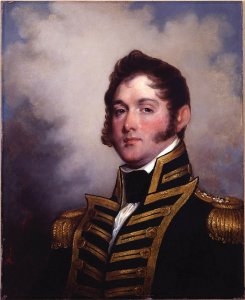
 age (French: Combat naval de Fou-Tchéou, Chinese:
age (French: Combat naval de Fou-Tchéou, Chinese: 
